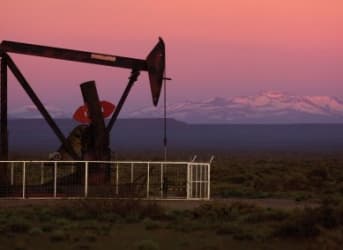Two hundred and nineteen years after Nathaniel Briggs first patented a washing machine, and crude continues to spin around the $40 level, unable to make a clean break above it. Here are eight things to consider today:
1) Much of Europe is closed for the Easter break, while here in the U.S. we get a few key bits of data. We’ve had inflation numbers in the form of the PCE index, which has come in below consensus, up just 1.7 percent YoY in February. Although this ties the highest level since October 2012, it is hardly indicative of strong inflationary pressures. Readings of both personal income and personal consumption have been better than expected, while spending was in line.
2) The chart below from the WSJ today highlights how the seven biggest publicly traded energy companies replaced just 75 percent of the oil and gas they produced last year. (Typically they run at a reserve replacement ratio of >100 percent).
Last year was the first time in over two decades that Exxon didn’t fully replace its production with new reserves, having a reserve replacement ratio of 67 percent. Shell was even worse, failing to replace any of the oil it pumped last year; its reserves actually shrank by 20 percent. Only Chevron, Eni and Total were able to maintain their reserve replacement ratio above 100 percent, while BP replaced 61 percent and Statoil replaced 55 percent.

3) While falling investment in the oil and gas industry is depleting reserve rates, the number of loans in the oil patch in danger of default this year is set to rise above 50 percent. Related: Why North-American Oil Is Positioned To Win In The Long-Run
Over fifty North American oil and gas producers have filed for bankruptcy since the start of 2015, while 175 companies are currently at high risk of not being able to meet their loan obligations. This is causing banks to reduce their exposure to the energy sector by either cutting back credit lines or by trying to sell on the deteriorating debt. As debt has risen in the oil and gas sector in recent years, so has the exposure of it across the banking sector:
(Click to enlarge)
4) The latest CFTC data has shown that the speculative net-long position in crude continues to rise, up 14 percent last week. Once again, this move has not been driven by bullish bets; it has instead been driven by a huge decrease in short positions. Short positions dropped for a seventh consecutive week, now down to the lowest level since August 2014.
(Click to enlarge)
5) According to GasBuddy, retail gasoline prices have risen above $2/gallon on the national average for the first time this year. While this increase is a seasonally typical response, given the switch from winter to summer blend (summer blendstock is more expensive as it requires components which don’t evaporate at higher temperatures), the recent rally in crude is also propelling prices back into two-dollardom. Related: Why We Could See An Oil Price Shock In 2016
6) Last week here at ClipperData we focused on the state of the Brazilian economy a few times, given that the health of it is so closely tied to the well-being of commodityland™. The chart below starkly illustrates the dire straits the economy is in: inflation is close to 12-year highs as the economy continues to shrink.
This piece expands on this theme, highlighting how Brazil’s deficit is spiraling out of control, while corporate borrowing has dried up and bankruptcies have increased. All the while, the Brazilian equity market, the Ibovespa, is up 24 percent so far this year – largely driven by the hope that current president, Dilma Rousseff, will be impeached.
(Click to enlarge)
7) Just as the rebound in crude prices has corresponded with weakness in the U.S. dollar, it has also corresponded with an unwinding of expectations that Saudi Arabia will abandon its currency peg. The Saudi riyal has been pegged at 3.75 since 1986, and after the 12-month contract peaked in January, it has since reversed back to levels last seen in November: Related: How Oil Can Be Used To Defeat ISIS
8) Finally, I watched ‘The Big Short’ over the weekend. Wow, what a movie.
By Matt Smith
More Top Reads From Oilprice.com:
- Was Russia’s Syrian Campaign Aimed At Turkish Energy Security?
- Oil Prices Beyond WTI And Brent
- Low Oil Prices Forcing Saudi Arabia To Modernize Economy























